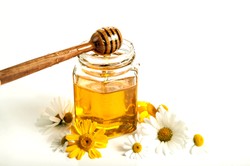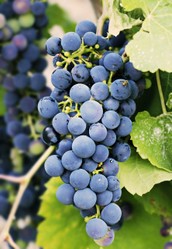The history of mead, sometimes known as honey wine, is rooted in the depths of time, when people first mixed honey and water and saw that what was produced by fermentation through what we now know was natural yeasts. Over the years the making of mead became refined and people learned more about it,developing refined tastes.At some time brewers realized that the must, the mixture from which a mead is made, should be of a thickness such that an egg should float in it to half its depth. But strangely mead was not always very sweet.The best brewers fermented much of the sweetness from it so that what resulted was a dry, fiery tasting brew. Yet there were sweet meads, and it is said that one was a favourite at the court of Queen Elizabeth the First. In this kind of mead the sugar was not as fully fermented as it was in drier meads. Up to the late eighteenth century English working class sometimes drank alu,an ale strength mead weaker than the conventional wine strength meads mentioned above, as an alternative to barley brewed ales. This was sometimes known as honey beer or ale mead.
There were hybrid drinks. One that faded out of sight at the Reformation was cyser, which was often brewed in the monasteries, which had both hives and apple orchards. The alcohol was produced from the mead sugars and the pressed apple pulp, from which the best cider is made. A similar hybrid is braggot or braggon, which was made from a fifty per cent blend of mead must and ale must made of barley malt. This was still drunk in the eighteenth century, but faded from fashion. A third mixture was an ancient one used by the Romans, piment, which follows the fifty per cent honey mixture principle but mixes it with grape juice. It is said to make a sweet dessert drink. The advantage of these hybrid drinks is that they are cheaper to make than mead is, for honey is not always in the greatest supply. A fourth hybrid was a mixture of mead and fruit juice make melomel. Any fruit can be used, but when red currants are used the brew is called red mead, whereas if the ingredient is white currants, it is white mead.
Next we come to metheglynn, which is a Welsh term for medicine. It was customary among mediaeval herbalists to administer herbal potions in alcoholic drinks, for most the drink was ale, but at times they were administered in mead. Any herbs could be used in metheglynn.
Mead fell from favour in the nineteenth century when mass produced barley and white grain sugar became easily available to brewers, as did more effectively produced yeasts that could provide brews strong enough to take higher levels of alcohol than more primitive yeast varieties could. However, mead has been enjoying a come back among food and drink enthusiasts,






 Women of the Gospelson 10/11/2025
Women of the Gospelson 10/11/2025
 Religious Gardenson 08/25/2025
Religious Gardenson 08/25/2025
 Doctor of the Church: John Henry Newmanon 08/03/2025
Doctor of the Church: John Henry Newmanon 08/03/2025
 Restoring the Palm Houseon 07/16/2025
Restoring the Palm Houseon 07/16/2025




Comments
I am unsure of this. Sorry.
My breakfast oatmeal perhaps has a consistency similar to tomato juice. My brother always liked his oatmeal chunky-thick.
My oatmeal might break, not float, an egg even as perhaps my brother's might not have let the egg even s-l-o-w-l-y sink to any depth.
Would the mixture be as thick as or thicker than thick spaghetti sauce?
I think it is thinner than breakfast oatmeal, but maybe that depends upon how thick you like your oatmeal to be
That first paragraph to the first subheading, Mead and mixed honey drinks, intrigues me about a mixture half of whose depth floats an egg.
What might that mixture look like? Would it be thicker than breakfast oatmeal?
I don't think that the type of egg matters.
The first paragraph to the first subheading, Mead and mixed honey drinks, alerts us that "At some time brewers realized that the must, the mixture from which a mead is made, should be of a thickness such that an egg should float in it to half its depth."
Did any kind or size egg matter?
I have never had a beer-wine-mead hybrid, but I suspect that it would be hard to make well .I have had piment, a wine-mead hybrid, and found it sweet, but that might just be the particular variety. Beer-mead hybrids were drunk up to the 19th century, and cyser, [cider-mead] was a great favourite until the Reformation. Such hybrids were probably cheaper than mead, but seem to have been popular.
As for what I would use, I think light ales and white wines would be my preference, as lighter wines and beers would allow the mead flavour to be more fully tasted.
Somehow my searches of what beers and red wines might be available to fictitious Icelanders in Ragnar Jónasson's novels and to real people behind the Vikings series brought up unrelated -- because not discussed in the former and not seen in the latter -- beer-mead-wine and beer-wine hybrids.
What do you think of such hybrids? If you were to make or sample them, what would you use in the way of beer (dark? light?), mead, wine (red? white?)?
Yes, there are craft brewers who make these specialized drinks. Sometimes what is sold as mead is actually a piment, as it contains some grape juice as well as honey.
There are private individuals who make these drinks non-commercially as well.
Previously, I intended to ask if drinks such as alu, braggot, cyser and piment are available for purchase or if there are individuals who make them non-commercially.